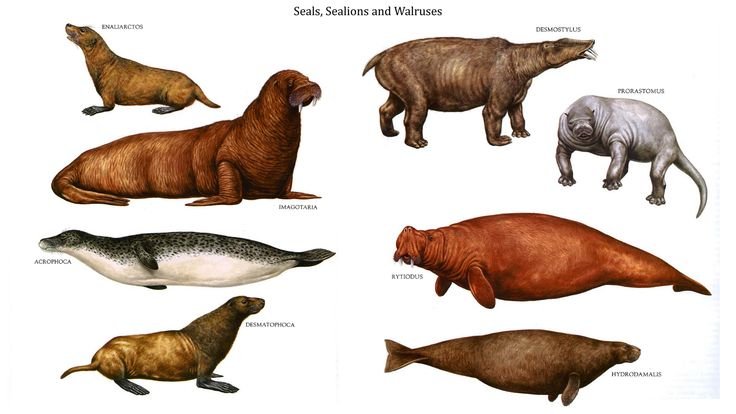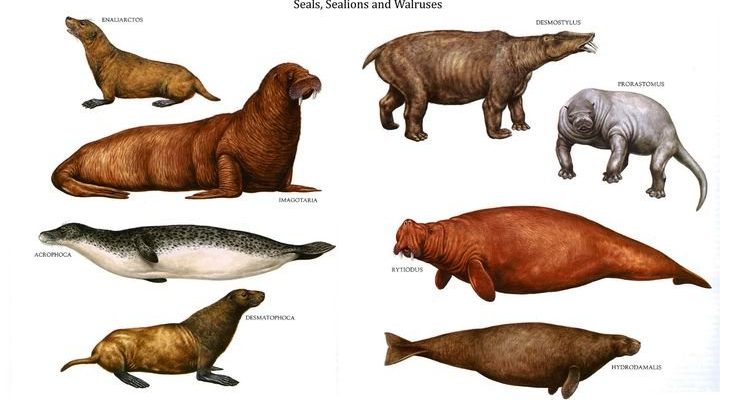
The evolution of the leopard seal is a captivating tale of adaptation and survival in one of the harshest environments on Earth. From their ancient ancestors to their current status as apex predators, these seals have a rich history that reflects how life evolves and adapts to its surroundings. So, grab your favorite beverage and let’s dive into this fascinating evolutionary journey.
Understanding Leopard Seals: An Overview
Leopard seals belong to the family Phocidae, which includes true seals. They’re named for their unique spotted coat, reminiscent of a leopard’s fur. Found primarily in the frigid waters surrounding Antarctica, these seals are well-adapted to their icy environment. They can grow up to 10.5 feet long and weigh up to 1,000 pounds.
You might be wondering what sets leopard seals apart from other seals. For starters, they have powerful jaws and large, sharp teeth designed for hunting. Unlike their more docile cousins, leopard seals can be aggressive and are known for preying on penguins and even other seals. This predatory nature makes them an essential part of the Antarctic ecosystem.
Leopard seals are also unique in that they are one of the few seal species that are solitary by nature. They prefer to hunt and rest alone, which sets them apart from more social seal species that often gather in large colonies. This solitary lifestyle allows them to be stealthy hunters, maximizing their chances of catching prey.
The Ancient Ancestors of Leopard Seals
To understand the evolution of the leopard seal, we need to take a step back in time. The ancestors of modern seals, including leopard seals, diverged from land mammals over 50 million years ago. These early pinnipeds, or “flipper-footed” mammals, adapted to life in the water as they started to hunt for fish and other marine creatures.
Through fossil records, we see that these early seals underwent significant changes over the millennia. They developed streamlined bodies for efficiency in water and specialized hunting techniques that improved their ability to catch prey. Ancient species like the Enaliarctos and Phoca are crucial links in this evolutionary chain, showcasing how seals adapted to their environments over time.
As we moved toward the present day, the leopard seal’s direct ancestors appeared about 7 million years ago. These seals exhibited more pronounced hunting skills and adaptations that would lead them to their current status as fierce predators in the Antarctic waters.
Physical Adaptations for Survival
The leopard seal has a series of remarkable physical adaptations that enable it to thrive in its challenging habitat. First off, their thick blubber layer provides insulation against the frigid temperatures of their environment. This blubber not only keeps them warm but also serves as an energy reserve during times when food is scarce.
Additionally, leopard seals have a remarkable ability to dive deep underwater. They can reach depths of over 600 feet and hold their breath for up to 20 minutes. Their large lungs and specialized blood cells allow them to store oxygen efficiently, which is crucial when hunting for prey. This ability to dive deep also helps them evade larger predators like orcas.
Their sharp teeth play a pivotal role in their hunting strategy. Unlike other seals that might have a softer diet, leopard seals have evolved to have strong, pointed teeth that can grip slippery prey, such as penguins and fish. This powerful jaw structure demonstrates how their physical traits have intertwined with their hunting techniques, making them formidable predators.
The Leopard Seal’s Role in the Ecosystem
Leopard seals play a vital role in the Antarctic marine ecosystem. As top predators, they help maintain the balance of species populations—particularly among their prey. By hunting penguins and other marine animals, they help ensure that no single species dominates the ecosystem, which promotes biodiversity.
You may not realize it, but leopard seals also contribute to the health of their environment in other ways. When they hunt, they often leave behind parts of their prey, which can decompose and provide nutrients to the ocean floor. This nutrient recycling is crucial for sustaining various marine life forms, from tiny plankton to larger fish.
Their presence also influences the behavior and distribution of other marine creatures. As apex predators, they create a ripple effect in the food chain, demonstrating how interconnected relationships are in any ecosystem. Essentially, by examining their hunting habits and impacts, scientists gain valuable insights into the health of the Antarctic marine environment.
Adaptations to Climate Change
As the planet warms, leopard seals face new challenges. Climate change is affecting the Antarctic habitat they rely on. Melting ice and changing ocean temperatures can impact food availability and alter migration patterns. It’s important to note that these seals typically rely on the ice for breeding and resting. With their habitat threatened, survival becomes a more significant challenge.
Research shows that leopard seals are adapting in some ways, exploring new hunting grounds, and changing their diets to include different species. However, these adaptations may not be enough to offset the rapid changes they face. The potential loss of sea ice could limit their breeding opportunities, leading to reduced populations over time.
Conservation efforts are crucial in addressing these challenges. Protecting the Antarctic environment and monitoring leopard seal populations will help ensure their survival. By understanding their evolutionary journey, we can appreciate their intricate place in our ecosystem and emphasize the importance of preserving their habitat.
The Future of Leopard Seals: Conservation and Awareness
Looking ahead, the future of leopard seals largely depends on conservation efforts and global awareness of climate change. Various organizations are working to protect marine environments and promote sustainable practices. This work is essential, especially as these predators face threats from changing ecosystems.
Raising awareness about leopard seals is crucial. Many people know little about these incredible animals, which can lead to misconceptions about their behavior and role in the environment. Educational programs that highlight their unique adaptations and ecological importance can foster a stronger connection between humans and wildlife.
By supporting conservation initiatives and learning about the challenges these seals face, we can all play a part in their preservation. After all, these fascinating creatures are more than just beautiful to look at; they represent the wonders of evolution and the delicate balance of our Earth’s ecosystems.
In conclusion, the evolutionary journey of the leopard seal reminds us of the complex interconnectedness of life. From their ancient ancestors to the powerful predators they are today, these seals exemplify the wonders of adaptation and survival. As stewards of the planet, it’s our responsibility to ensure that such incredible species continue to thrive in their natural habitats.

